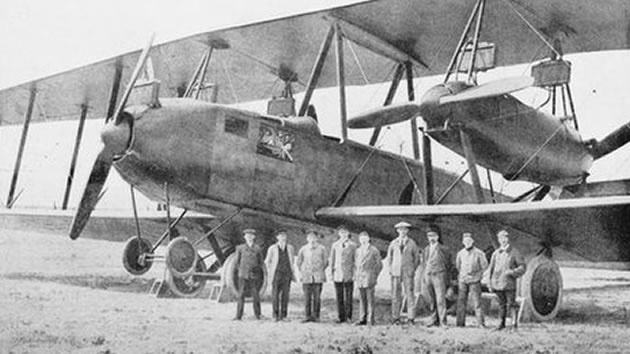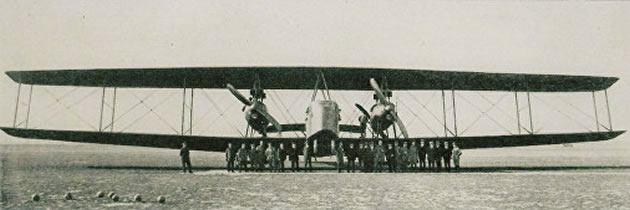Chiswick’s First and Forgotten Blitz
One hundred years ago today giant bombers brought devastation to local streets

'Giant' (Zeppelin-Staaken R.VI)
Most people are aware that Chiswick suffered during the blitz in the second world war and saw the first V2 rocket explode on Staveley Road.
However, this was not the first time in the area’s history that bombers brought terror to the local area. This night (29 January) one hundred years ago a squadron of German bombers, which dwarfed in size anything sent over by Hitler’s Luftwaffe, launched a raid and there was no RAF around to protect residents.
Earlier on in the war the Germans had used Zeppelins to bomb targets in England with limited success but by 1918 they had developed huge aircraft capable of carrying a much larger payload. These planes caused significantly more damage to London than the inflatables ever did. The first generation of German bomber was the Gotha but they subsequently developed the ‘Giant’ or Riesenflugzeug which had a wingspan of over 42 metres, about the same width as a football pitch. It could fly for over 500 miles at a top speed of 84mph with a crew of seven.
Ian Castle who has written three books on the air offensive against Britain in the First World War has studied in detail the attacks that took place. The following account is taken from his research. On the night of the 29 January four of these ‘Giants’ set off on a raid but one developed engine problems shortly after take-off. The other three came inland over Essex at about 10pm. Around 15 minutes later the ‘Giant’ plane R.39, commanded by Hauptmann Richard von Bentivegni, the leader of Rfa 501, was intercepted by Captain Arthur Dennis, No. 37 Squadron, flying a BE12b. The British pilot opened fire which was returned and the German plane took evasive action. The slipstream from its massive engines led to Captain Dennis losing control and he lost sight of the enemy.
Von Bentivegni’s, plane skirted around London and was sighted about Hertford just before 11pm. He turned south and headed for west London. At around 11.30pm they released 12 incendiary bombs but these fell harmlessly on the Old Deer Park in Richmond. Two high explosive (HE) devices were dropped, one landing one in the enclosure of the Kew Observatory and one on the 14th Green of the Mid-Surrey Golf Club. Both caused craters but did little other damage.
Then they crossed the Thames and dropped seven incendiaries in and around Syon Park without effect. Next, over Brentford, three HE bombs fell with one in Whitestile Road demolishing a house and claiming the lives of the three women and five children of the Kerley family inside as well as 70 year old Catherine Berrows. The next bomb exploded in the street in Enfield Road “4 cottages badly damaged, and 101 small premises to a smaller extent”. The third bomb in Brentford exploded on the railway track of the London & South Western railway by Clayponds Road. Besides gouging a 5 foot deep crater on the railway the report states the bomb caused ‘severe damage to Carville Hall’.

An R.VI type Riesenflugzeug or 'Giant', the same type that attacked London on the night of 29/30 January 1918. Picture from Ian Castle's site
This bomb, together with one in Enfield Road, badly damaged six other properties and inflicted lesser damage on 151 other houses. At the Metropolitan Water Board’s works at Kew Bridge six HE bombs exploded, killing two men, George Bentley aged 45 and William Finch, aged 43, injuring another and damaging a reservoir, pumping station and boiler house. Another bomb, on the pavement outside the works, caused injuries to five men, burst four water mains, while damaging telegraph and telephone lines and 13 buildings.
The final three bombs landed in Chiswick where they caused damage to 99 houses. The first landed at the junction of Chiswick High Road and Wellesley Road causing a five foot deep crater in road, a burst water main burst and damage to 30 premises including the Labour Exchange. Another hit the junction of Chiswick High Road and Stile Hall Gardens causing a five foot deep crater in road and damage to 42 houses. The third hit the garden of 36 Park Road leaving a 10 feet deep crater and damaging 27 houses.
The crew, way out in their navigation, claimed to have dropped their bombs between Charing Cross and West India Docks on the either side of London. Before R.39 reached the coast, three other RFC pilots engaged her but she escaped.
The two other Giants in the squadron, did not make it as far as west London dropping their bombs on Essex without causing any loss of life.
If you want to learn more about this forgotten Blitz visit Ian Castle’s web site to find out more.
January 29, 2018